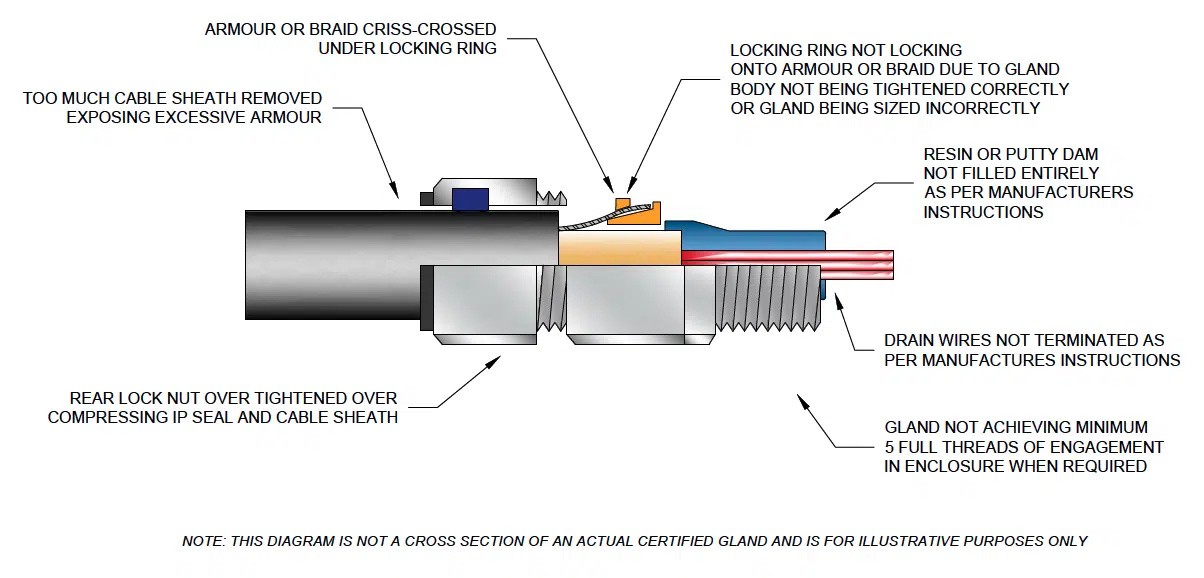The Single Strategy To Use For Roar Solutions
The Single Strategy To Use For Roar Solutions
Blog Article
8 Simple Techniques For Roar Solutions
Table of ContentsSome Known Factual Statements About Roar Solutions Roar Solutions Can Be Fun For AnyoneThe 30-Second Trick For Roar Solutions
In such an atmosphere a fire or explosion is feasible when three basic conditions are fulfilled. This is usually described as the "harmful location" or "combustion" triangle. In order to safeguard installments from a prospective surge a technique of analysing and identifying a possibly dangerous area is called for. The function of this is to make sure the appropriate selection and installment of devices to ultimately protect against a surge and to ensure security of life.
(https://au.enrollbusiness.com/BusinessProfile/7095102/ROAR%20Solutions)
No equipment ought to be installed where the surface area temperature level of the equipment is more than the ignition temperature level of the given threat. Below are some usual dirt unsafe and their minimal ignition temperature level. Coal Dirt 380C 225C Polythene 420C (thaws) Methyl Cellulose 420C 320C Starch 460C 435C Flour 490C 340C Sugar 490C 460C Grain Dust 510C 300C Phenolic Resin 530C > 450C Aluminium 590C > 450C PVC 700C > 450C Residue 810C 570C The possibility of the danger being existing in a concentration high sufficient to cause an ignition will differ from place to area.
In order to identify this risk an installment is divided into areas of danger relying on the amount of time the harmful exists. These locations are referred to as Zones. For gases and vapours and dirts and fibers there are three areas. Area 0 Area 20 A harmful ambience is extremely likely to be present and might be present for extended periods of time (> 1000 hours per year) and even constantly Area 1 Zone 21 A harmful atmosphere is feasible however unlikely to be present for lengthy durations of time (> 10 450 C [842 F] A classification of T6 indicates the minimal ignition temperature level is > 85 C [185 F] Unsafe area electrical tools maybe developed for use in greater ambient temperature levels. This would showed on the rating plate e.g. EExe II C T3 Ta + 60C( This means at 60C ambient T3 will certainly not be gone beyond) T1 T1, T2, T3, T4, T5, T6 T2 T2, T3, T4, T5, T6 T3 T3, T4, T5, T6 T4 T4, T5, T6 T5 T5, T6 T6 T6 A T Class score of T1 implies the maximum surface temperature level produced by the instrument at 40 C is 450 C. Thinking the connected T Class and Temperature level score for the tools are suitable for the area, you can always utilize an instrument with a much more rigorous Division score than required for the area. There isn't a clear response to this inquiry. It truly does depend upon the kind of devices and what fixings require to be executed. Devices with details examination procedures that can not be executed in the field in order to achieve/maintain third celebration score. Should come back to the factory if it is before the devices's service. Area Repair By Authorised Worker: Challenging screening may not be called for nevertheless details treatments may need to be followed in order for the devices to preserve its 3rd party ranking. Authorized workers must be employed to perform the job properly Repair work need to be a like for like substitute. New element should be thought about as a direct substitute requiring no unique screening of the tools after the repair service is total. Each piece of equipment with a hazardous ranking ought to be evaluated individually. These are laid out at a high degree listed below, but also for more in-depth information, please refer directly to the standards.
Getting The Roar Solutions To Work
The devices register is a detailed database of devices documents that includes a minimum set of areas to determine each item's location, technical specifications, Ex-spouse classification, age, and ecological data. This info is vital for monitoring and taking care of the tools efficiently within unsafe locations. In contrast, for routine or RBI sampling examinations, the grade will certainly be a combination of Detailed and Close inspections. The proportion of Detailed to Shut evaluations will be identified by the Equipment Risk, which is examined based on ignition threat (the likelihood of a resource of ignition versus the probability of a flammable environment )and the harmful area category
( Zone 0, 1, or 2). This variant will also influence the resourcing needs for job preparation. Once Lots are specified, you can develop sampling strategies based upon the example size of each Great deal, which describes the number of random equipment things to be evaluated. To establish the called for sample size, 2 facets need to be examined: the dimension of the Lot and the group of assessment, which shows the level of initiative that must be applied( minimized, typical, or raised )to the inspection of the Whole lot. By incorporating the category of examination with the Great deal dimension, you can after that establish the proper denial standards for an example, meaning the permitted variety of defective items located within that sample. For more details on this process, please refer to the Energy Institute Guidelines. The IEC 60079 common advises that the optimum interval in between examinations must not go beyond 3 years. EEHA assessments will additionally be conducted outside of RBI projects as part of set up maintenance and tools overhauls or fixings. These inspections can be attributed toward the RBI sample sizes within the affected Lots. EEHA examinations are conducted to identify faults in electric tools. A heavy scoring system is necessary, as a solitary tool might have multiple faults, each with differing levels of ignition threat. If the mixed score of both inspections is less than twice the mistake score, the Whole lot is deemed acceptable. If the Lot is still thought about inappropriate, it must undergo a complete assessment or justification, which might set off more stringent evaluation procedures. Accepted Lot: The sources of any type of faults are recognized. If an usual failing setting is discovered, added tools may call for maintenance. Mistakes are classified by seriousness( Safety and security, Honesty, Home cleaning ), guaranteeing that immediate issues are evaluated and dealt with without delay to minimize any effect on safety and security or operations. The EEHA database ought to track and record the lifecycle of faults in addition to the rehabilitative actions taken. Executing a durable Risk-Based Assessment( RBI )method is important for making certain conformity and safety and security in taking care of Electric Devices in Hazardous Locations( EEHA) (hazardous area course). Automated Fault Rating and Lifecycle Administration: Effortlessly manage mistakes and track their lifecycle to improve inspection accuracy. The intro of this assistance image source for risk-based examination further strengthens Inspectivity's setting as a best-in-class option for regulative compliance, in addition to for any asset-centric evaluation use situation. If you have an interest in discovering more, we invite you to ask for a demo and find exactly how our service can transform your EEHA management procedures.
How Roar Solutions can Save You Time, Stress, and Money.

In terms of eruptive risk, a harmful location is an environment in which an eruptive environment is present (or might be expected to be existing) in quantities that need special preventative measures for the building, installation and use equipment. eeha courses. In this article we discover the difficulties dealt with in the office, the danger control steps, and the required expertises to function safely
It is a repercussion of contemporary life that we produce, keep or manage a series of gases or fluids that are considered combustible, and a variety of dirts that are regarded flammable. These substances can, in specific conditions, form explosive environments and these can have major and terrible repercussions. A lot of us are familiar with the fire triangular eliminate any one of the 3 components and the fire can not take place, yet what does this mean in the context of dangerous locations? When damaging this down right into its easiest terms it is essentially: a combination of a specific quantity of launch or leakage of a specific substance or product, blending with ambient oxygen, and the existence of a resource of ignition.
In a lot of instances, we can do little regarding the degrees of oxygen in the air, however we can have substantial impact on resources of ignition, for example electrical equipment. Hazardous locations are recorded on the unsafe location category drawing and are determined on-site by the triangular "EX LOVER" indication. Right here, amongst other key info, areas are split into three types depending upon the danger, the probability and period that an eruptive environment will exist; Zone 0 or 20 is deemed the most unsafe and Area 2 or 22 is regarded the least.
Report this page